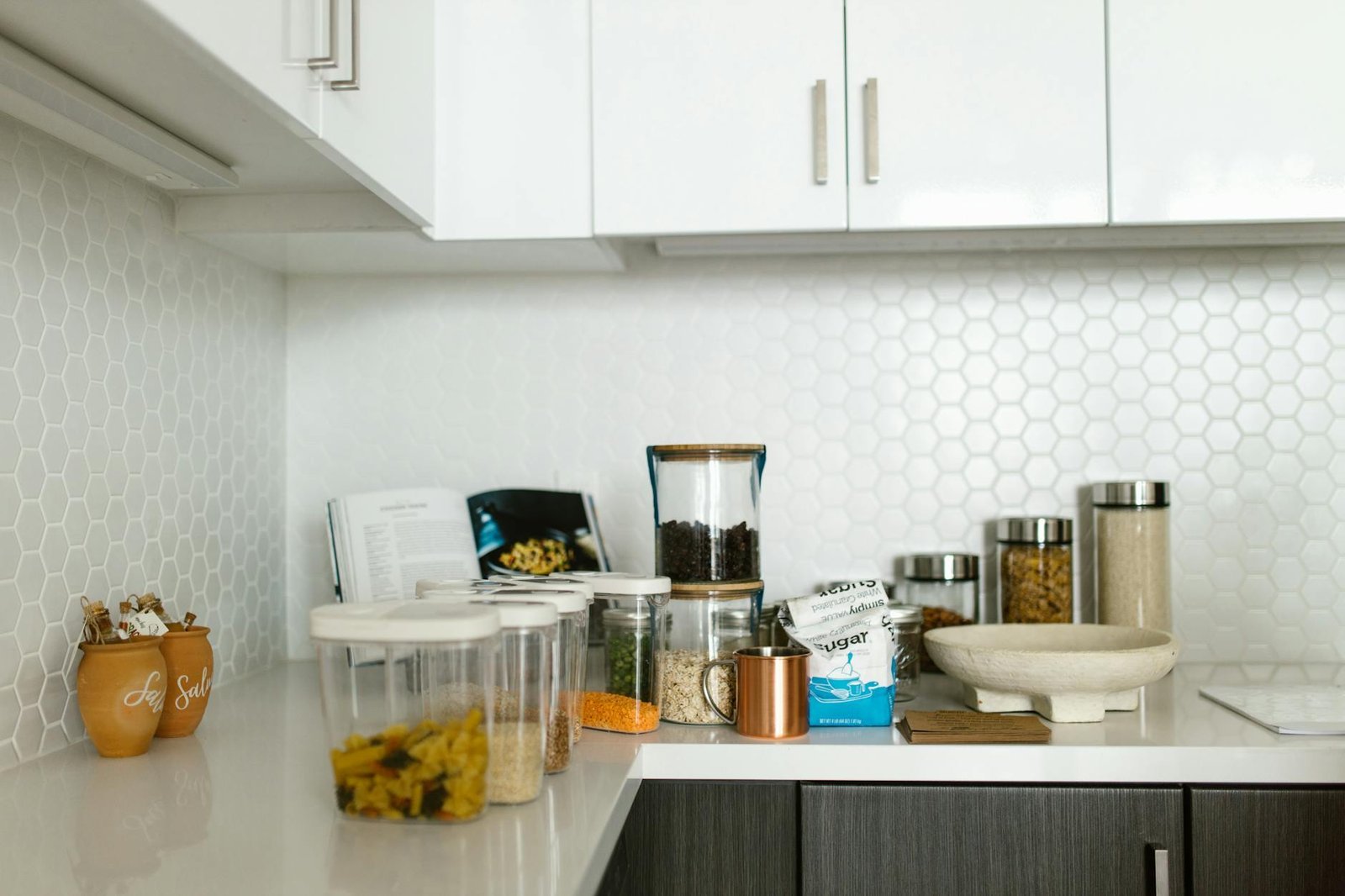Organizing Your Kitchen Easily
Living with a chronic illness can often present us with a unique set of challenges that can hamper daily tasks, including those we handle in the kitchen. We may not want to, but recognizing and understanding our limitations is a necessary step for creating spaces that work with our bodies rather than against it. Chronic illnesses can lead to fatigue, persistent pain, mobility issues and cognitive challenges, all of which can mess with even the simplest kitchen activities.
Fatigue is a common symptom that people with chronic illnesses face, as I do with my fibromyalgia. It can pop-up as a sudden lack of energy, making it difficult to stand for long periods or complete things such as meal prep. Pain can also limit the ability to move comfortably and perform necessary task like chopping veggies or cleaning surfaces. Some people can also experience mobility issues that make reaching higher shelves or navigating around the kitchen space easily. And “brain fog” can make it a huge challenge to focus or remember recipes, further messing with cooking.
To refine your kitchen organization, we have to conduct a gentle self-assessment. Start by identifying which tasks are most difficult for you. Is it reaching for items? Standing for a long time? Or maybe managing multiple tasks at once? An understanding of your own personal challenges will help you adapt your kitchen space to your specific needs.
“Reframing” your mindset can also play a huge role in your kitchen experience. Instead of viewing your limitations as obstacles, see them as opportunities to create a custom space that supports your organization and cooking methods. A positive perspective can help in making adjustments, making kitchen jobs feel more manageable and less overwhelming.
Tools for Simplified Organization
For those of us living with chronic illnesses, creating and maintaining an organized kitchen can sometimes feel like an hugely overwhelming jobs, especially when energy levels are limited. Using the right tools can simplify kitchen organization and make it easier. One effective solution is the use of pull-out shelves, which allows for easier access to pots, pans and pantry items without the need for excessive bending or reaching. Pull-out shelving in lower cabinets means essential items become easier to see and get your hands on.
Clear storage containers are another essential tool in for kitchen organization. These containers allow you to easily view contents from the outside, decreasing the need to rummage through cupboards or drawers. By categorizing food items into clear bins—such as grains, snacks or baking supplies—you can streamline meal prep and cooking. Labelling containers with large, easy-to-read fonts makes it not only easier to see the labels, but we can make sure anyone can quickly find ingredients as needed.
Grabber tools can be helpful for those with limited mobility. These handy devices help reach high shelves or grab items from inconvenient locations without hurting yourself. By using a grabber tool, we can keep our independence in the kitchen while also minimizing the risk of injury or fatigue. Adaptable tools like these can help you transform your kitchen environment, making it easier to navigate for those of us managing chronic illnesses.
Choosing helpful tools that fit your personal needs is crucial for maintaining kitchen organization. Each of these things can contribute to a more manageable space, allowing you to focus on meal prep and enjoying their time in the kitchen rather than feeling overwhelmed by it.
Strategic Organization Techniques
By putting in place strategic organization techniques, you can create a more functional kitchen space that accommodates unpredictable energy levels and mobility challenges.
One strategy is to group like items together. For instance, putting baking supplies in one area, cooking utensils in another and spices close to the stove can streamline the cooking process. This helps in both finding items quickly, as well as reduces the movement needed to gather ingredients and tools. Consider using clear containers and labels can make identification easier and prevent unnecessary searching, which can be tiring.
Another organizing principle is making sure frequently used tools and appliances are within easy reach. Adjust the layout of your kitchen to keep essential items at waist height or lower, avoiding the need to reach up high or bend down a lot. For people with limited mobility, a rolling cart can be a great idea for storing items that can be moved closer to the worktop when needed.
Creating a workspace that minimizes unnecessary movements is also critical. Think about the order in which you use items while cooking or prepping meals. For example, keep cutting boards, knives and bowls in close proximity to your prep area. This simple adjustment can save energy and streamline the cooking process.
Lastly, it is important to recognize the need for flexibility in your kitchen organization. By allowing for short bursts of organization, individuals can tackle small areas or tasks without feeling overwhelmed. Whether it’s sorting one drawer at a time or reorganizing pantry items in small chunks, these efforts contribute to a more organized kitchen that is easier to navigate.
Maintaining Your Organized Space
Keeping up an organized kitchen can seem daunting, especially for those of us living with chronic illnesses. Establishing a sustainable system is easy to achieve with the right strategies. A key to this process is to create a routine for quick clean-ups that fits within your energy levels and daily capabilities. Allowing just ten to fifteen minutes each day for tidying up can reduce clutter and prevent overwhelm. Tasks can include wiping down surfaces, putting away dishes or organizing pantry items. Consider it your nightly reset for your space.
Another strategy is to do a regular review of your kitchen space. Consider scheduling a brief review every month to evaluate areas that are vulnerable to disorder. During these assessments, take note of things that are rarely used, which could be relocated or donated to create more space. This proactive approach makes sure that your kitchen stays conducive to your unique needs without requiring any major overhauls.
Involving helpers or caregivers in maintaining your organized kitchen can also help take the pressure off. Be clear about your organizing preferences clearly, and try to delegate tasks based on your support network’s strengths. For example, if a friend enjoys meal prep, they might help by prepping pre-portioned ingredients that fit your organization system, allowing you to enjoy meals without additional stress.
When setting organizational goals, aim for realistic and manageable outcomes. Start with one drawer or shelf at a time and gradually do more as you feel comfortable. Celebrating small successes can enhance motivation and reinforce a positive mindset. Acknowledging progress, no matter how small, contributes to a sense of accomplishment and encourages ongoing maintenance of your organized kitchen space.
Discover more from Nest + Note
Subscribe to get the latest posts sent to your email.






